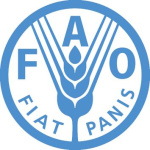- Industri: Agriculture
- Number of terms: 87409
- Number of blossaries: 0
- Company Profile:
Established in October 1945 with the objective of eliminating hunger and improving nutrition and standards of living by increasing agricultural productivity, FAO coordinates the efforts of governments and technical agencies in programs for developing agriculture, forestry, fisheries, and land and ...
The transmission of particular characteristics and/or genes from generation to generation.
Industry:Biotechnology
The transplantation of tissue from one species to another species, typically from non-human mammals to humans. This technology has become very important because of a worldwide shortage of human organs for humans requiring a new organ. The most popular non-human species involved in this technology is the pig.
Industry:Biotechnology
The treatment of a DNA preparation with an endonuclease for sufficient time for all of the potential target sites within that DNA to have been cleaved. <i>cf</i> partial digest.
Industry:Biotechnology
The treatment of disease, especially infections or cancer, by means of chemicals. In treating cancers, it involves administering chemicals toxic to malignant cells.
Industry:Biotechnology
The treatment of inherited diseases by introducing into the cells of affected individuals the wild-type copies of the defective gene causing the disorder. If reproductive cells are modified, the procedure is called germ-line or heritable gene therapy. If cells other than reproductive cells are modified, the procedure is called somatic-cell or non-inheritable gene therapy.
Industry:Biotechnology
The trunk or root material to which buds or scions are inserted in grafting.
Industry:Biotechnology
The twig or bud to be grafted onto another plant, the root stock, in a budding or grafting operation.
Industry:Biotechnology
The two nuclei within the embryo sac at the upper end in the ovule of the flower, which, with the third (the egg), constitute the egg apparatus.
Industry:Biotechnology
The unique pattern of DNA fragments identified originally by Southern hybridization (using a probe that binds to a polymorphic region of DNA) or now by polymerase chain reaction (PCR) (using primers flanking the polymorphic region).
Industry:Biotechnology
